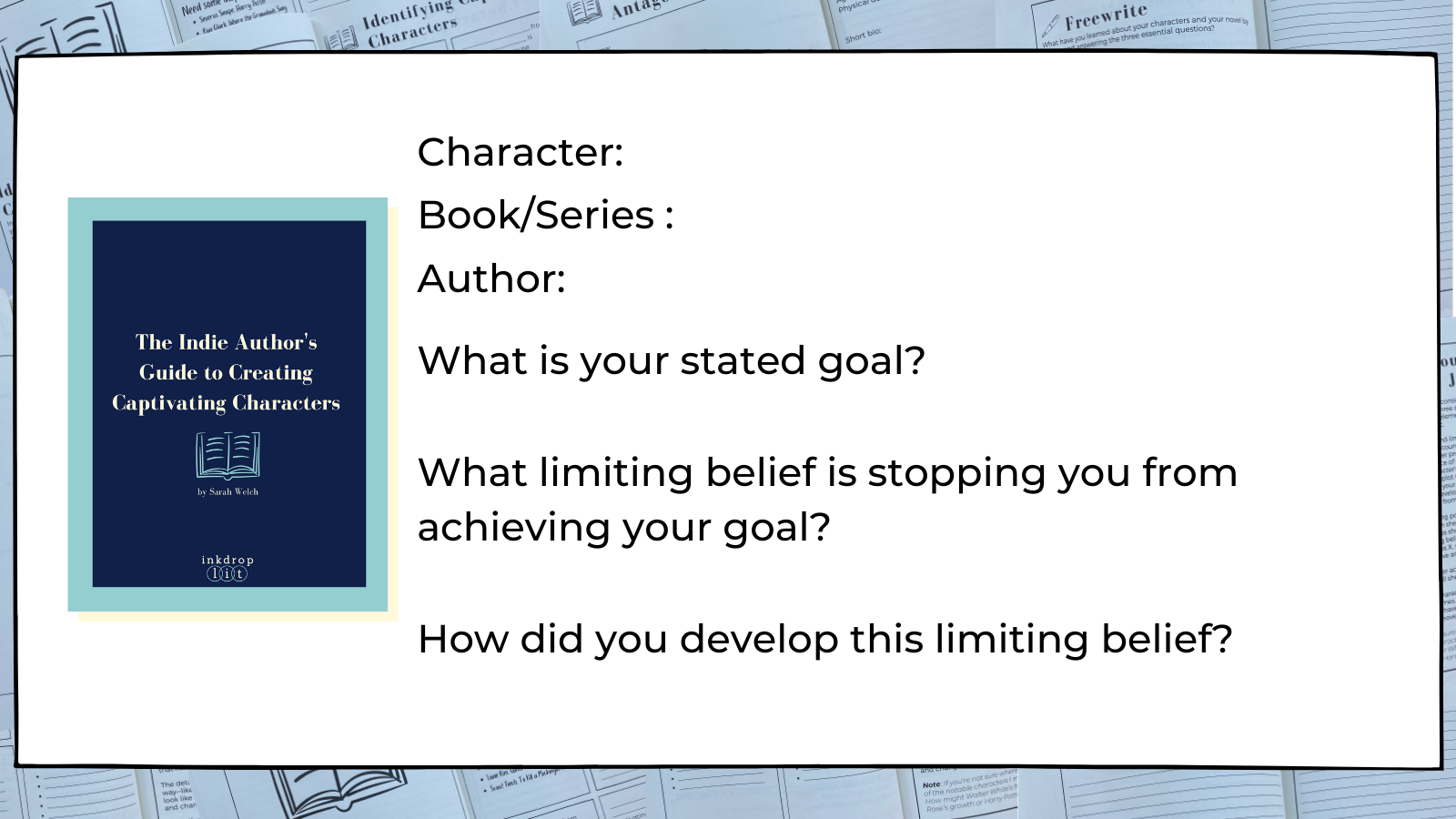When we talk about developing characters, it’s easy to get sucked into imagining every single detail about a character’s life — from the day she was born to her entire family dynamic to her first day of school to that nightmare she had when she was twelve, etc. While some of that may be useful, a lot of it is extra.
What you really need to know about your protagonist are the answers to these three questions:
1. What is your stated objective?
What is the one thing the character wants more than anything else in the world?
Characters drive plot, and objectives drive characters. Every decision captivating characters make revolves around their objective — the object or person or state of being they desire above all else — and what they’re willing to do to get it.
For a fun way to explore character objective, check out my 2021 blog post on the “I Want” song.
2. What is the limiting belief that’s stopping you from achieving her goal?
A limiting belief is a false assumption that’s holding a character back from getting what they want.
For example:
“I’m not brave enough to succeed.”
“I have to be perfect to be loved.”
“I can’t be happy unless I’m rich.”
The limiting beliefs will always have a corollary that’s more true:
“I can overcome my fears.”
“I’m worthy of love as I am.”
“I can be happy with what I have.”
Once the character overcomes her limiting belief and embraces its corollary, then she’ll either be able to move closer to her goal or she’ll realize it wasn’t the right goal to begin with and she’ll be able to see what she really wants with clearer perspective.
3. How did you develop this limiting belief?
Limiting beliefs come from wounds of the past. Maybe it was a traumatic incident that established the limiting belief, or maybe it was a particular family dynamic or a relationship with a friend (or playground enemy) at school. Whatever that wound comes from, it has shaped how the character sees herself — and the limiting belief it established is the number-one obstacle in the way of her achieving her goal. Identifying the wound that caused the limiting belief will help you figure out how your character will eventually overcome it.
These three questions are required to create a complex character. The rest, in broad strokes, is color.

